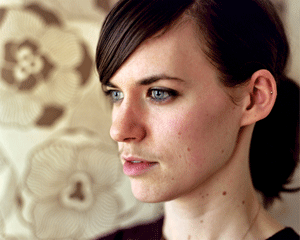Particle Fever
A film about the experiments run at the Large Hadron Collider to find the Higgs-Boson. Too much human interest. Too little science. Pervasive meaningless animations. The lack of science in the film was best captured towards the end. One of the experiment directors gave a speech about the implications of their experimental findings. The audience of scientists were, judging by their expressions, fascinated. The audience of the film were not, because the speech was drowned out by music that the filmmakers added to the soundtrack.
#notebook
The Puffy Chair
This film comes from the same scene as Humpday and Your Sister’s Sister by Lynn Shelton. Mark Duplass, the co-writer and co-director of The Puffy Chair, stars in all three films. All three have the same aim: naturalistic portrayal of the subtleties of relationships.
I have been thinking a lot about the differences between the films. I can’t identify any. They are all shot the same way. There is an improvised, messy tone that is common to all the dialogue. They all have crucial, contrived elements that should derail the films completely (the brother in The Puffy Chair is a caricature, Humpday corners the two guys and makes them agree to have sex, Your Sister’s Sister herds three people into a remote cabin).
The thing is: Humpday and Your Sister’s Sister are marvellously truthy and moving and meaningful, and The Puffy Chair is not. I don’t know why.
#notebook
Des Ark, My Saddle Is Waitin’ (C'mon Jump On It)
Des Ark - house show (solo) - YouTube
I’ve posted this several times to my blog. I still find it meaningful: the setting, the song, the rendition of the song, the explanation.
#notebook
Last Year at Marienbad
This film had interesting themes. Collaborating on constructing the story of a time you shared with someone else. What it means to be a writer allowed to make up a story out of nowhere. The possibility for multiple, equally credible interpretations of a piece of art. The different ways your current self can inhabit your memories as you examine them: by acting differently, or saying different words, or changing what other people say or do.
Unfortunately, the way the film was constructed was so over-bearing, it was impossible to surrender to it. The insistent man: first nagging, then hectoring. The evasive apathy of the woman. The paused tableaus. The non-linear cuts. The repeated reformulations and reinterpretations of statements and events. It all served the themes, but the overall effect was of a dream. And dreams are boring because they make no sense. I wished the film had explored the same ideas, but in a simple, down-to-earth story.
My favourite part was the formalism of the garden mirrored the formalism of the film’s representations of people:
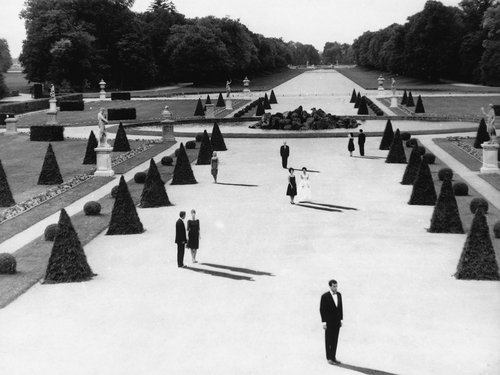
#notebook #medianotes
Thirty Flights of Loving
I find it difficult to bring myself to say anything about this game. It is, in essence, an interactive dream. It has the narrative discontinuities of a dream. The inexplicable feelings of a dream. And I mistrust anything I can’t explain, so I am tempted to suppress any praise of Thirty Flights of Loving.
But, through the things Colin Stetson says with his saxophone, and the things Jonathan Blow said about Buddhism and the moon and a pointing finger, and the things my friend, Joe, has said about learning to experience art through someone else’s perspective, I am learning to set aside my mistrust.
With that in mind, I can present the two pieces of Thirty Flights of Loving that I found moving, and I can side-step the desire to explain them or justify why they are good, or talk about their relationship to all the other bits of the game that I did not find moving.
Um, these are spoilers, I suppose.
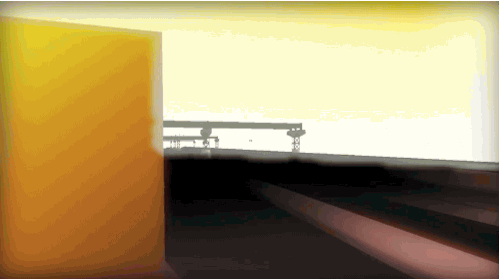
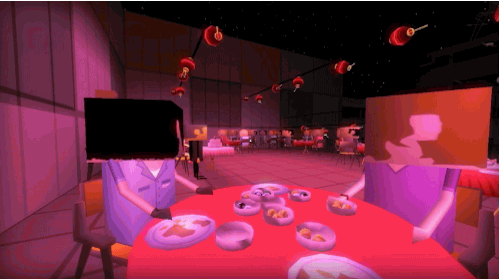
#notebook #medianotes
Tim's Vermeer
A documentary that follows Tim, an inventor, as he tries to paint his own version of The Music Lesson by Vermeer. His theory is that Vermeer used an optical device that places a mirror showing the subject over the canvas. This lets the painter compare the paint with the reflection of the subject side by side, so they can get the tone and texture just right.
Tim spends some time closing in on a replica of the optical device that Vermeer used. He makes a replica of the room that is depicted in The Music Lesson. This latter is the most interesting part of the film. He has a viola da gamba made. He builds the facade of a virginal. He turns the legs for a replica of the chair that sits in the foreground. He builds windows and fixes to them screens that show a view of Delft.
The film spends some time criticising the art historians who refuse to accept that Vermeer employed optical aids in his work. David Hockney is shown saying that this refusal betrays a simple-mindedness about what art really is.
The film shows a somewhat greater degree of insight. A man points out that Pieter de Hooch achieved somewhat similar looks without using optics. He credits Vermeer for his geometrical and symbolic compositions. But, ultimately, the film suffers from the same simple-mindedness as the historians. It positions Tim’s Vermeer as a successful replica of Vermeer’s Vermeer. It reduces Vermeer’s technique to the optics. But look for half a second and you see that the people in Tim’s Vermeer are a complete disaster.
#notebook
Catherine Destivelle solos in Mali
React.js - JSConf EU 2013
Pink grapefruit lip balm.

#notebook
Leonard Bernstein
“When the passion is too much to talk, sing. When the passion is too much to sing, dance.”
#notebook
ABBA, The Winner Takes it All
08 The Winner Takes It All.mp3
This song was written by Björn Ulvaeus and Benny Andersson and sung by Agnetha Fältskog. They all deny that the words are about Ulvaeus’s and Fältskog’s divorce, saying the words describe any divorce.
It is sort of tempting to delight in the magical brutality of an ex-husband writing a song from the perspective of his ex-wife about their divorce, and then getting her to sing it. But, this temptation comes from a desire to see life as harsher and more beautiful and more coherent than it really is.
It seems more likely that Ulvaeus took the fact of his own divorce and emphasised it to produce an exquisitely beautiful pain.
The words are sometimes laughable (“Their minds as cold as ice”) and occasionally meaningful (“Building me a fence. Building me a home.”) They serve chiefly to give you a few emotional reference points. The music takes these and develops them into something far bigger and more moving. Especially the last chorus where Fältskog sings “The winner takes it all” in the ordinary way, and then sings it again, one tone higher.
#notebook #medianotes
Destiny’s Child, Say My Name (Cyril Hahn remix)
Alex Honnold free-climbs the El Sendero Luminoso
Robert Henke interview
30dez13 - Robert Henke (english subtitles) on Vimeo
“I try to be more structured in my approach. Because I want to avoid the great danger of being arbitrary. Let’s say this is pretty and this is pretty, and this and this. I’ll combine them. You can do that for one album, but if you do it for your entire career, I think the chance is relatively big that you’re producing an arbitrary output of exchangeable stuff. So I try to find a context of some sort into which I can put my own creation while I’m creating it. This context then becomes an auxiliary construction which excludes certain things.”
“With music I’m primarily interested in timbre. What does it sound like? Which overtones happen when and why? And then there is rhythm. And then nothing for a long time.”
“I remember creating a piece at some point. It was a Saturday or Friday night. I finished it at two a.m. I put it on a DAT tape, put my portable DAT recorder under my arm, went to Panasonic, said hello to Mo and Kotai, and bang! the track was playing. I never wondered if this would work at Berghain at three a.m.”
#notebook
Watching Des Ark

#notebook
Charlie Victor Romeo
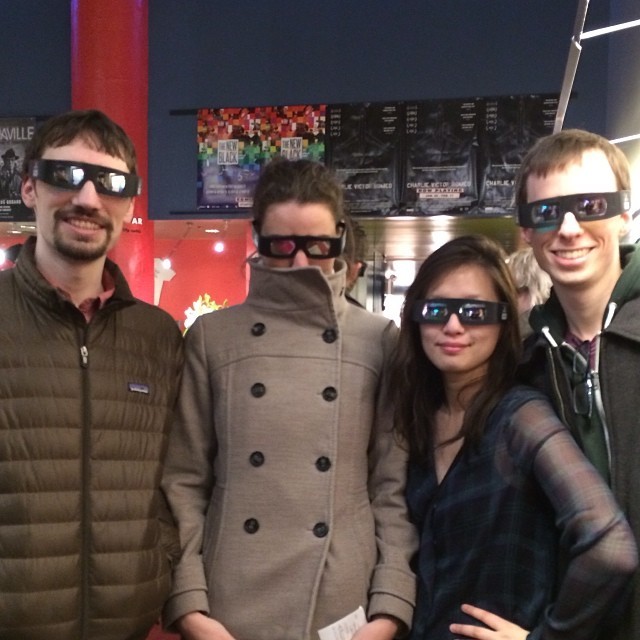
Everyone has their 3D glasses ready for Charlie Victor Romeo. I thought the mention of 3D in the trailer was a joke.
#notebook
Drinking Buddies
It is trite to say that Hollywood romances are trite. One of the interesting things they tell us is how little story matters, but how important narrative is. Stories are just events and causality. Narratives are meaning. The director can make meaning from the exciting new person, the reliable ex, a character’s sacrifice of their ideals for their beloved, a character staying true to themselves. And, really, when we say “meaning”, we are talking about order. Things being as they should be.
What Hollywood can’t do is complexity. Perfection, in whatever event it is found, must be simple. Two lovers must be of one mind as they turn together into their shared, final moment. All idealised romances peak in a perfect moment and then end. That moment might be eternal, but there are definitely no new moments afterwards. If you don’t stop the story, you have to return to imperfection.
I find the complexity in indie movies. Your Sister’s Sister. Humpday . And, now, Drinking Buddies.
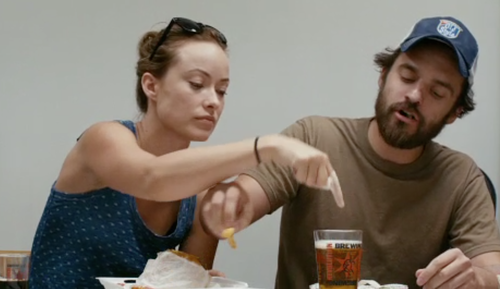
It’s just about a man and a woman who are friends and who kind of fancy each other. It’s about what might have been. It’s about flirting, but always maintaining deniability. It’s about physical affection that is both sexual and not meant to go anywhere.
#notebook #medianotes
Le Cousin Jules
I saw this at Film Forum. It was gorgeous.
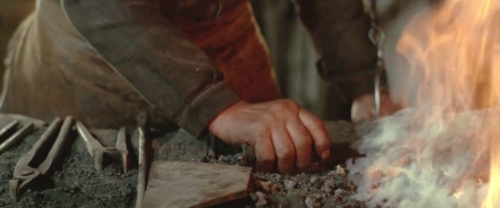
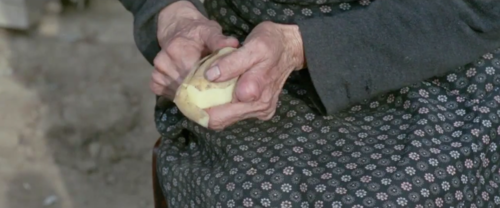
It’s a documentary about an old couple who live on a farm. He is a blacksmith, she tends to the animals and cooks and cleans.
There are many fascinating details. The axel above the well that has been worn away in the middle by decades of winching up buckets of water. The huge bellows for the blacksmith’s fire, the leather more patch that not. The way the fire is lit. The way the metal is heated and worked. The wine kept in a barrel in an outhouse.
The husband and wife say almost nothing, besides remarks about the good coffee or requests for errands in the town.
The film looks very beautiful. The fields. The orange of the fire. The rich grey of the stone. In a way, it is too beautiful. What is probably a life with many privations is shown as a gilded communion with nature.
Half way through the film, you realise you haven’t seen the wife for a while. Now, based upon what you know of the couple, it is unlikely she has gone for a week away with the girls, or run off with another man. There is only one possible explanation for her absence: she is dead. Nothing is said. There is no voiceover to explain. There is just the man cooking. The man sewing on a button. The man fluffing the pillows on the bed.
#notebook #medianotes
Songs: Ohia, Farewell Transmission
The Knife, Stay Out Here
theknife-stayouthere.mp3
I like the way Karin Dreijer Andersson’s voice changes from female-sounding to male-sounding. I like the way the second voice joins in, like one runner falling into step with another. I like the way this is, really, a commercial dance track, but queer.
The album is a little too diffuse. The latest Chromatics album wanders down a similar path, but retains its shape because, really, it goes in one direction for a while, then resolutely heads off into the wilderness. Shaking the Habitual doesn’t quite keep it together because it has a twenty-minute atmospheric in the middle and then fails to regain a direction.
#notebook #medianotes
Pierrot le Fou
What does it mean to entangle the characters in a criminal underworld that seems phoney? What does it mean for Marianne to betray Ferdinand when her act of betrayal is both non-sequitous and inconsequential? If you can’t believe in the plot, there is no framework of causality in the film. You stagger from image to image and event to event without being moved by anything.
But what is left are fragments of meaning that, though not logical or causal, are emotionally true.
A stagey party that is emblematic of a stagey life, the characters throwing shadows like actors.
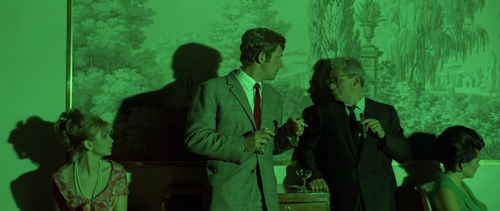
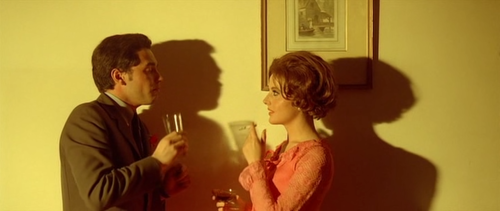
Ferdinand lying in the bath and reading a passage of art criticism to his daughter:
“Velázquez, past the age of 50, no longer painted specific objects. He drifted around things like the air, like twilight, catching unawares in the shimmering shadows the nuances of color that he transformed into the invisible core of his silent symphony. Henceforth, he captured only those mysterious interpenetrations that united shape and tone.”
You have no idea what the critic is talking about, but you know exactly what she means.
A red tie against a blue door.
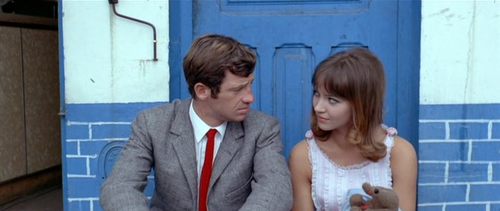
A romantic drive that is at once a rich, graded old Hollywood picture, and washed through every few seconds with primary colours.
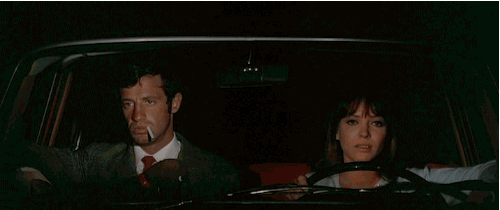
The final shot. Just the sea, with Marianne and Ferdinand reunited in the voiceover above our heads. Le Mépris, too, is about the dissolution of a relationship, and it, too, ends with a shot of the sea.
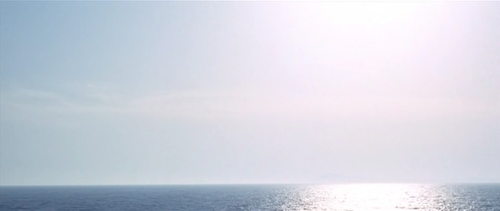
#notebook #medianotes
Functional programming for the rest of us
George Orwell
Good prose is like a window pane.
#notebook
Climbing

Twice this week, I have been to Brooklyn Boulders to climb. So fun. My friends, Zach and Dave, have helped me with tips, spots and a dizzying array of climbing terminology, and I have managed to do a V0, a V1 and a V1+.
Bump. Smear. Flag.
#notebook
Jiro Dreams of Sushi
A film about the man who is regarded as the best sushi chef in the world.

“You have to fall in love with your work.”
“You must immerse yourself in your work.”
“The rest is how hard you work.”
“After about ten years, they let you cook the eggs. I had been practicing making the egg sushi for a long time. I thought I would be good at it. I kept messing up. I was making up to four a day. But they kept saying ‘No good, no good, no good.’ I felt like it was impossible to satisfy them. After three or four months, I had made over 200 that were all rejected. When I finally did make a good one, Jiro said, 'Now this is how it should be done.’ I was so happy I cried.”
#notebook #medianotes
Vermeer, Rembrandt and Hals at the Frick
Last Sunday, I got up early and went to the Frick. I stood outside and, after a couple of hours’ queuing, I went in.
The Girl with the Pearl Earring only really made me feel one thing: fearful radiance.

I very much liked Hals’s portrait of Jacob Pietersz Olycan. The hand is incredible. And his arrogant, slightly weary expression.

I spent a long time looking at Rembrant’s Tronie of Man With Feathered Cap. I found it fascinating that, the more I stared at the area around the right eye, the side of the nose and the nostril, the more realistic it became. It just seemed to come more and more into focus.

But my favourite, by a long chalk, was Rembrandt’s Susana. He has done two paintings of the subject. In this one, the lustful Babylonian elders are not pictured, because, as Susana’s gaze makes clear, we are them.
Her eyes are horrified, which makes it all the more awful. The whole moment seems to be paused like a memory, everything stopped: her hand wringing out her hair, her jewellery glinting hyperreal, the half-contorted thumb of the hand that is moving to cover her body.

#notebook #medianotes
The Making of Raiders of the Lost Ark
Production Designer, Norman Reynolds: “I just wonder if it’s just a little bit convenient that everything happens in [the same town square].”
Steven Spielberg: “But you see, what it does is gives it a geography. And I think sometimes a geography makes an audience more secure with a story.”
-
Steven Spielberg: “Every actor needs a different director for each moment. And I think I have to be a different director for each actor, moment to moment.”
-
It was surprising to me how much Spielberg guided the actors. For example, he showed Karen Allen the exact facial expression he wanted for a scene.
-
Spielberg storyboarded the entire film himself in advance.
#notebook
Why do some fields of enquiry - physics, maths - only advance, producing increasingly accurate views of the world, while others - politics, history - oscillate between being closer to and further from the truth?
A game based on forced perspective
Blindness: Ludum Dare 28 innovation winner
http://shaunew.github.io/bl1nd-ld28/
I found this very tender. And I love the idea of only seeing having to infer the size and location of objects by changing your vantage point.
#notebook
Wynne Greenwood, image from Peas
My niece likes to have many straws in her drink

#notebook
At Berkeley
A four hour documentary about UC Berkeley. It mostly covered administrative decision-making. The best parts, and the most convincing arguments for the film’s main thesis on the value of a public university, were the recordings of interesting lectures on science, history, psychology, English literature.
#notebook
A present for my nephew
Can you guess what it is?

#notebook
On the subway. Taken by Vera.

#notebook
Wynne Greenwood
Richard Feynman
It is a great adventure to contemplate the universe, beyond man, to contemplate what it would be like without man, as it was in a great part of its long history and as it is in a great majority of places. When this objective view is finally attained, and the mystery and majesty of matter are truly appreciated, to then turn the objective eye back on man viewed as matter, to view life as part of this universal mystery of greatest depth, is to sense an experience which is very rare, and very exciting. It usually ends in laughter and a delight in the futility of trying to understand what this atom in the universe is, this thing — atoms with curiosity — that looks at itself and wonders why it wonders.
#notebook
The Pervert's Guide to Ideology
I saw this with my friend, Dave, a couple of weeks ago. The thrust was that every film tries to push an ideology, usually implicitly and sometimes covertly. Most of the ideologies that Slavoj Žižek cites are ones of control and subjugation.
It was interesting to hear his thoughts on the imagery, metaphor, scripting and construction of great films. Which is to say, it was great to hear his thoughts on how interesting films achieve their effects. It made me want to see Jaws, Taxi Driver, If and The Sound of Music again. It made me want to see Brief Encounter, The Searchers, West Side Story, Zabriskie Point and The Last Temptation of Christ for the first time.
But his central thesis, that popular films are pushers of ideologies of control, was like all grand unified theses of popular culture: it has so much material to choose from, and that material is so subjective, it is possible to find evidence for any argument. One can often even see a way to take the same material and argue the precise opposite.
Even less rigorous, he cited The Last Temptation of Christ as the only film that escapes the ideology of control and evangelises for individual freedom. Which sounds suspiciously like another ideology.
#notebook
La Grande Bellezza
It’s fascinating to me when someone makes something that talks about something they find important, and I find it completely inconsequential.
#notebook
John Carmack talking about functional programming
John Carmack's keynote at Quakecon 2013 part 4 - YouTube
I found this talk fascinating.
He talks about how to enforce purity. Only let game objects access the state of other objects by passing them a memory protected copy. That way, any attempts to cheat and mutate data are quashed.
He talks about changing state in a functionally pure environment. If one object wants to mutate another, it just passes it a message. It is up to the receiver to apply the message in the next tick.
#notebook
Antonioni
L'avventura
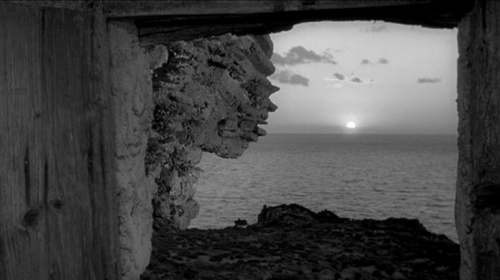
#notebook #medianotes
Symmetrical. Kind of.

#notebook
200 BC in The Met

#notebook #medianotes
Back to basics
The Punk Singer
I saw this at DocNYC tonight. The first Julie Ruin record and Real Fiction by The Fakes are two of my all time favourites, and I used to listen to a lot of riot-grrl. But the film, quite apart from being about someone I find interesting, was really good. The structure was sensibly organised around the bands Hanna was in. It put the music she made in an accurate, meaningful social context.
#notebook
Tommy Makem, The Butcher Boy
Beyond the Hills
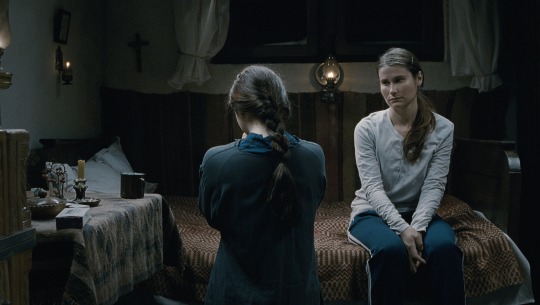
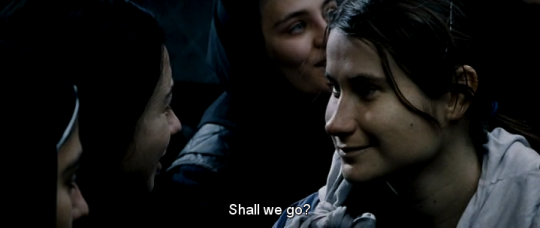
Spoilers.
I saw this six months ago when it came out at the cinema. It is almost as spare as Cristian Mungiu’s first film, 4 Months, 3 Weeks and 2 Days. But the film-making draws even less attention to itself. 4 Months… was sometimes so naturalistic that it was a little showy: the long supper scene with the static camera, the scene where the camera waits in the bathroom while each of the women go out to the bedroom to have sex with the man who performs the abortion.
Beyond the Hills is wonderful because the central relationship between the two women (second from left and on the right) is a complete mystery. What were they to each other before they were reunited at the convent? Why does the devout woman quietly and tenderly absorb the other’s affection and neither reject her nor let her in? Why does she finally decide to cast her lot in with her friend and leave the convent?
In the still above, the devout nun finally casts in her lot with her friend and her friend smiles and then dies. It makes me cry whenever I think about it.
#notebook #medianotes
Colin Stetson, Among the Sef
06 among the sef.mp3
I love the way the sound of the saxophone dies away, just leaving the clacking of the keys. I love how the song feels both frenetic and mournful, like it’s a desperate attempt to save something that is slipping away.
This song reminds me of the summer just gone. Of floating around New York in the baking heat and going to the cinema three times in one weekend.
#notebook #medianotes
Beach House, On the Sea
09 On the Sea.mp3
I adore the vibrato guitar. I adore the melody that falls, then steps up one tone, then falls again: “Whistle to a friend. Gentle till the end. Anyway in a name she takes shape just the same.” And I love love love the line: “Wouldn’t you like to know how far you’ve got left to go?”
#notebook #medianotes
Blue is the Warmest Colour
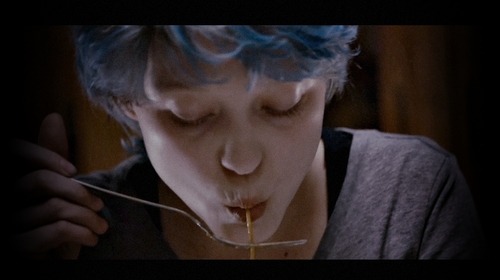
It’s really hard to choose any stills from this film. Most of them are either beautiful and, so, make the film seem trite, or mundane and, so, make the film seem empty. The one I wanted was of Adèle floating in the sea, finally able to get away from her own emotions and the tumult of circumstances that life has imposed on her. But the stills I could find of that look too sexualised and miss the point.
I chose the shot above. It’s at once down to earth and nicely composed.
It’s rare for a film to take you on a journey, where you think back to the start and can’t believe how much everyone has changed. Malcolm X did this. And Blue is the Warmest Colour does this.
The sex scenes, certainly in the way they have affected the film’s reception, are a distraction. It’s the emotional honesty of the film that is great. But, in the internal logic of the film, the sex scenes are appropriate. The director is trying to show emotions in raw form. The sex scenes are one of the expressions of that. They are, like the the snot that runs down Adèle’s lip when she cries, a way of saying: “If you want raw, I’ve got raw. You may think that two women having sex is sexy, but it is a mixture of crude and funny and sexy and beautiful. Like sex.”
My favourite line comes when the relationship is breaking down. Emma the painter says to Adèle the schoolteacher, of the woman Emma is flirting with at a party:
“She’s a painter, too.”
#notebook #medianotes
Pages: 0, 1, 2, 3, 4, 5, 6, 7, 8, 9, 10, 11
























